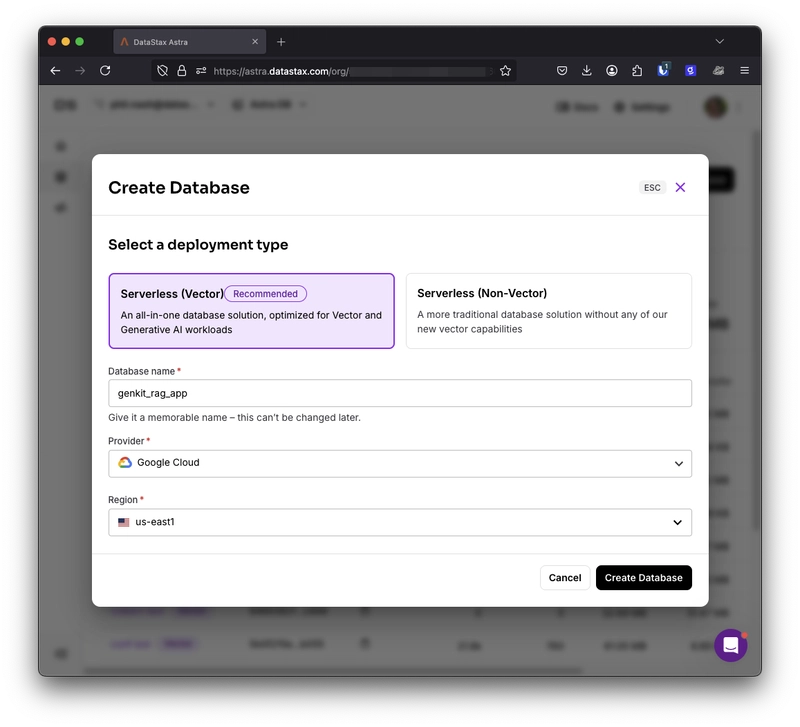CORS and Same-Origin Policy Deep Dive
CORS and Same-Origin Policy Deep Dive In the modern web landscape, Cross-Origin Resource Sharing (CORS) and the Same-Origin Policy constitute fundamental concepts that govern how web applications interact with resources across different origins. Understanding these concepts is crucial for developing secure and efficient web applications. This article delves deeply into these concepts' historical background, technical mechanisms, code implementations, performance considerations, and real-world applications, aiming to equip senior developers with practical insights and advanced knowledge on the topic. Historical and Technical Context Emergence of the Same-Origin Policy The Same-Origin Policy (SOP) is a critical security mechanism implemented in web browsers. It’s designed to prevent malicious scripts from one site from interacting with the resources of another website, thereby protecting sensitive user data like authentication tokens and personal information. The SOP was first introduced in the early 1990s, driven by the desire to establish trust boundaries around webpage interaction. The principle of the SOP is straightforward: two resources have the same origin if they share the same protocol (HTTP/HTTPS), domain, and port. For instance: https://example.com:443/page1 and https://example.com:443/page2 (Same Origin) http://example.com/page1 and https://example.com/page1 (Different Origins) Introduction of CORS To facilitate scenarios where cross-origin requests are necessary—such as accessing APIs hosted on different domains—CORS was introduced as a secure way to manage such interactions. It specifies rules and headers that determine which resources can be shared between different origins. Developed to provide a controlled way to allow cross-origin resource sharing, CORS emerged as web applications became more complex and began relying heavily on third-party APIs. By explicitly allowing or disallowing certain origins, and protecting against Cross-Site Request Forgery (CSRF) attacks, CORS forms a protective layer while offering the necessary flexibility for web applications. Technical Mechanisms Behind CORS and SOP The Same-Origin Policy: How It Works The SOP restricts scripts running in a browser to interact with resources from the same origin. For example, a script loaded from https://www.example.com cannot make XMLHttpRequests to https://api.example.com unless CORS headers are correctly implemented. Browsers enforce this policy at the scripting level through their built-in security models, but developers must be aware of the limitations and underlying mechanisms of the SOP. CORS: Mechanism Breakdown CORS operates using HTTP headers that inform the browser whether to permit cross-origin requests. The key headers involved include: Access-Control-Allow-Origin: Specifies which origins can access the resource. It can be a specific origin or a wildcard (*). Access-Control-Allow-Methods: Lists the HTTP methods (GET, POST, OPTIONS, etc.) allowed when accessing the resource. Access-Control-Allow-Headers: Specifies which headers can be used during the actual request. Access-Control-Expose-Headers: Indicates which headers can be exposed to the client. Access-Control-Max-Age: Caches the results of the preflight request for a specified duration. Preflight Requests CORS involves two types of requests: simple requests and preflight requests. A simple request is made directly, while a preflight request is an HTTP OPTIONS request sent by the browser before the actual request to determine if the cross-origin request is allowed. W3C defines simple requests as those meeting specific criteria (like using safe methods: GET, POST, HEAD; and not including certain headers). If a request does not qualify as "simple," the browser performs a preflight check. Code Example 1: Simple CORS Implementation Below is an example demonstrating a simple CORS implementation on a Node.js Express server: const express = require('express'); const cors = require('cors'); const app = express(); // Enable CORS for all origins app.use(cors()); app.get('/data', (req, res) => { res.json({ message: 'CORS is working!' }); }); app.listen(3000, () => { console.log('Server running on http://localhost:3000'); }); Code Example 2: Preflight CORS Handling For scenarios necessitating preflight, the server's code becomes a bit more nuanced: const express = require('express'); const app = express(); // Handling preflight requests app.options('/data', (req, res) => { res.header('Access-Control-Allow-Origin', req.headers.origin); res.header('Access-Control-Allow-Methods', 'GET, POST, OPTIONS'); res.header('Access-Control-Allow-Headers', 'Content-Type'); res.sendStatus(204); }); app.post('/data', (req, res) => { res.json({ message: 'POST request received!' }); }); app.listen(3000, () => { console

CORS and Same-Origin Policy Deep Dive
In the modern web landscape, Cross-Origin Resource Sharing (CORS) and the Same-Origin Policy constitute fundamental concepts that govern how web applications interact with resources across different origins. Understanding these concepts is crucial for developing secure and efficient web applications. This article delves deeply into these concepts' historical background, technical mechanisms, code implementations, performance considerations, and real-world applications, aiming to equip senior developers with practical insights and advanced knowledge on the topic.
Historical and Technical Context
Emergence of the Same-Origin Policy
The Same-Origin Policy (SOP) is a critical security mechanism implemented in web browsers. It’s designed to prevent malicious scripts from one site from interacting with the resources of another website, thereby protecting sensitive user data like authentication tokens and personal information. The SOP was first introduced in the early 1990s, driven by the desire to establish trust boundaries around webpage interaction.
The principle of the SOP is straightforward: two resources have the same origin if they share the same protocol (HTTP/HTTPS), domain, and port. For instance:
-
https://example.com:443/page1andhttps://example.com:443/page2(Same Origin) -
http://example.com/page1andhttps://example.com/page1(Different Origins)
Introduction of CORS
To facilitate scenarios where cross-origin requests are necessary—such as accessing APIs hosted on different domains—CORS was introduced as a secure way to manage such interactions. It specifies rules and headers that determine which resources can be shared between different origins.
Developed to provide a controlled way to allow cross-origin resource sharing, CORS emerged as web applications became more complex and began relying heavily on third-party APIs. By explicitly allowing or disallowing certain origins, and protecting against Cross-Site Request Forgery (CSRF) attacks, CORS forms a protective layer while offering the necessary flexibility for web applications.
Technical Mechanisms Behind CORS and SOP
The Same-Origin Policy: How It Works
The SOP restricts scripts running in a browser to interact with resources from the same origin. For example, a script loaded from https://www.example.com cannot make XMLHttpRequests to https://api.example.com unless CORS headers are correctly implemented. Browsers enforce this policy at the scripting level through their built-in security models, but developers must be aware of the limitations and underlying mechanisms of the SOP.
CORS: Mechanism Breakdown
CORS operates using HTTP headers that inform the browser whether to permit cross-origin requests. The key headers involved include:
Access-Control-Allow-Origin: Specifies which origins can access the resource. It can be a specific origin or a wildcard (
*).Access-Control-Allow-Methods: Lists the HTTP methods (GET, POST, OPTIONS, etc.) allowed when accessing the resource.
Access-Control-Allow-Headers: Specifies which headers can be used during the actual request.
Access-Control-Expose-Headers: Indicates which headers can be exposed to the client.
Access-Control-Max-Age: Caches the results of the preflight request for a specified duration.
Preflight Requests
CORS involves two types of requests: simple requests and preflight requests. A simple request is made directly, while a preflight request is an HTTP OPTIONS request sent by the browser before the actual request to determine if the cross-origin request is allowed.
W3C defines simple requests as those meeting specific criteria (like using safe methods: GET, POST, HEAD; and not including certain headers). If a request does not qualify as "simple," the browser performs a preflight check.
Code Example 1: Simple CORS Implementation
Below is an example demonstrating a simple CORS implementation on a Node.js Express server:
const express = require('express');
const cors = require('cors');
const app = express();
// Enable CORS for all origins
app.use(cors());
app.get('/data', (req, res) => {
res.json({ message: 'CORS is working!' });
});
app.listen(3000, () => {
console.log('Server running on http://localhost:3000');
});
Code Example 2: Preflight CORS Handling
For scenarios necessitating preflight, the server's code becomes a bit more nuanced:
const express = require('express');
const app = express();
// Handling preflight requests
app.options('/data', (req, res) => {
res.header('Access-Control-Allow-Origin', req.headers.origin);
res.header('Access-Control-Allow-Methods', 'GET, POST, OPTIONS');
res.header('Access-Control-Allow-Headers', 'Content-Type');
res.sendStatus(204);
});
app.post('/data', (req, res) => {
res.json({ message: 'POST request received!' });
});
app.listen(3000, () => {
console.log('Server running on http://localhost:3000');
});
In this example, the server explicitly configures the allowed methods and headers for preflight requests, requiring careful resource management to ensure compliance with SOP while allowing necessary cross-domain interactions.
Advanced CORS Scenarios and Edge Cases
Dynamic Response Headers
One powerful feature of CORS is that the response headers can be dynamic. For instance, you might want to allow only the origin making the request, which requires setting the Access-Control-Allow-Origin header dynamically. Here's how:
app.use((req, res, next) => {
const allowedOrigins = ['http://example1.com', 'http://example2.com'];
const origin = req.headers.origin;
if (allowedOrigins.indexOf(origin) > -1) {
res.setHeader('Access-Control-Allow-Origin', origin);
}
res.header('Access-Control-Allow-Methods', 'GET, POST, OPTIONS');
res.header('Access-Control-Allow-Headers', 'Content-Type');
next();
});
Credentialed Requests
In scenarios requiring credentials (like cookies and HTTP authentication), CORS provides Access-Control-Allow-Credentials. By setting this header to true, you allow cookies to be sent in cross-origin requests, but note the following:
- The
Access-Control-Allow-Originheader cannot be a wildcard (*). - Clients must set
withCredentialstotrue.
Here’s a sample client-side code in JavaScript for making credentialed requests:
fetch('http://localhost:3000/data', {
method: 'GET',
credentials: 'include',
})
.then(response => response.json())
.then(data => console.log(data))
.catch(error => console.error('Error:', error));
Error Handling and Debugging
Debugging CORS issues can be tricky because errors occur on the client-side without much feedback. Key debugging techniques include:
Browser Console: Investigate CORS-related errors in the developer console. Errors often specify which header or method is causing the issue.
Network Tab: Monitor the requests in the Network tab of the developer tools. Look at the request and response headers to ensure they match expectations.
Access-Control-Allow credentials: Make sure that your server correctly handles requests when credentials are involved.
Comparing CORS with Other Approaches
CORS and SOP have their limits, and in specific contexts, alternatives may be more applicable:
JSONP (JSON with Padding): An older method that leverages the



































































![Apple to Split Enterprise and Western Europe Roles as VP Exits [Report]](https://www.iclarified.com/images/news/97032/97032/97032-640.jpg)
![Nanoleaf Announces New Pegboard Desk Dock With Dual-Sided Lighting [Video]](https://www.iclarified.com/images/news/97030/97030/97030-640.jpg)
![Apple's Foldable iPhone May Cost Between $2100 and $2300 [Rumor]](https://www.iclarified.com/images/news/97028/97028/97028-640.jpg)




























































































































































































![[The AI Show Episode 144]: ChatGPT’s New Memory, Shopify CEO’s Leaked “AI First” Memo, Google Cloud Next Releases, o3 and o4-mini Coming Soon & Llama 4’s Rocky Launch](https://www.marketingaiinstitute.com/hubfs/ep%20144%20cover.png)
































































































































































































































